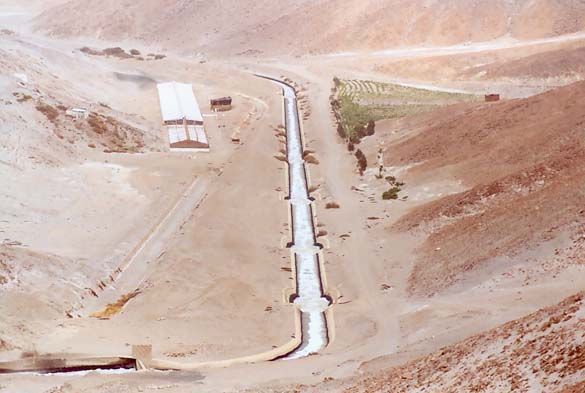CIV E 530 - OPEN-CHANNEL HYDRAULICS
SPRING 2014
LAB No. 1: PROPERTIES OF OPEN CHANNELS
-
An irrigation channel operating on a hilly slope at Vedernikov number V = 1, with bottom slope So = 0.025, has a potential to develop roll waves. To eliminate this possibility, a new channel has been proposed with a slightly different alignment and a smaller bottom slope, operating at Vedernikov number V = 0.75 (see figure below). Calculate the bottom slope in the new channel.
The following conditions apply:
Both channels are concrete lined and the same value of Chezy friction is applicable.
At the design depth, the ratio of top width to wetted perimeter is nearly the same for both channels.
-
The exponent of the rating (β) can be assumed to be the same for both channels.
The minimum practical slope permitted by the terrain is S = 0.02. Determine whether a series of drops will be necessary in the new channel.

Calculate the velocity distribution coefficients for the following All-American canal data:
Flow area A = 2768 ft2
Increment velocity v (fps) Incremental
flow area ΔA (%)1 3.5 0.5 2 4.0 2.9 3 4.5 10.3 4 5.0 23.5 5 5.5 52.7 6 6.0 10.1 Compare these calculations with the results of approximate formulas.
A spillway is designed for q = 6 m3/s/m with a depth d = 0.5 m. The resulting flow near the crest will be convex. What should be the radius of curvature of the spillway cross section to ensure that the pressure does not fall below 50% of hydrostatic?